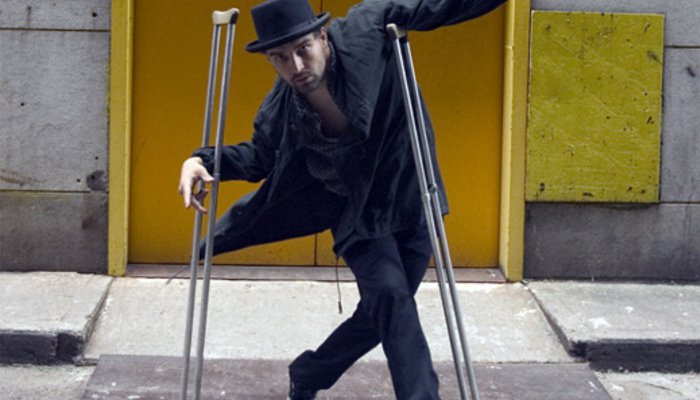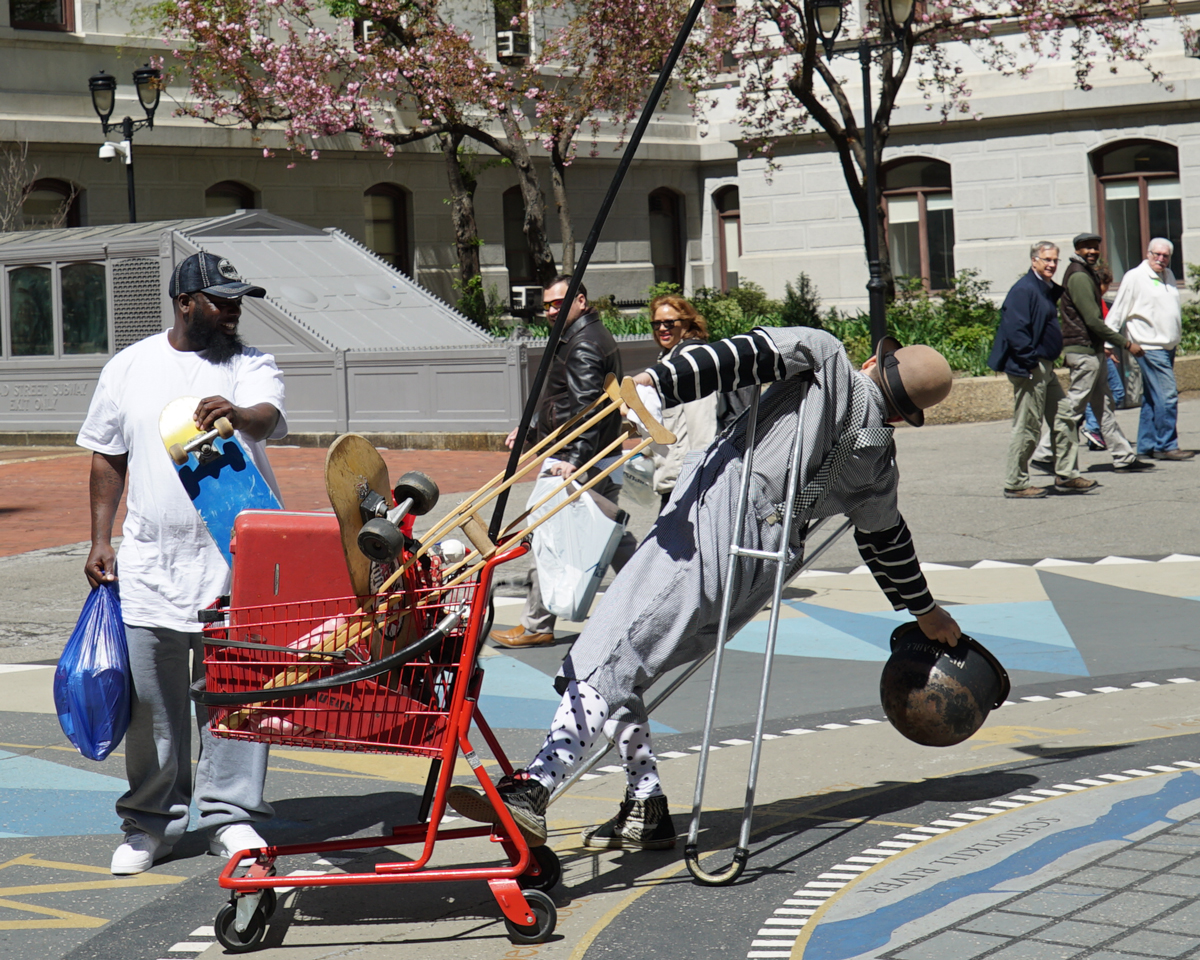Multi-disciplined Bill Shannon Brings Street Dance Experience to ‘Trolley Dances 2016’
He’s not your typical dance artist. Bill Shannon spins on weightless feet with the support of aluminum crutches. Without fear, he spirals down staircases and tumbles with arms extending as shiny wings.
He glides through traffic on a skateboard like a slalom skier. The acrobatic street dancer freezes in angular poses by tucking a crutch under his body. He won’t let a disability define him.

Bill Shannon is a street dancer known for using multi-media and mixing hip hop with urban environments. Courtesy image
“I have rocker bottom crutches, but I don’t need crutches to dance,” Shannon said while describing his performance in Trolley Dances 2016. “My work is not about crutches. I’m a street performer and an artist, not a guy on crutches. I go beyond the label.”
A line from his website is telling. “MY DANCE HAS NO HISTORY. It is a product of my specific cultural era in combination with the personal details of my life and physical makeup.”
Shannon developed his unique style while on and off crutches. For most of his childhood, he used crutches because of a degenerative hip disorder, Legg–Calvé–Perthes disease.
After not needing crutches for years, he needed them again in his 20s. Each crutch is a lever and a pivot that allows him to do unexpected movement. He is a spinning paradox.
A prolific artist, Shannon performed “Spatial Theory” in San Diego back in 2014. He’s performed in group and solo shows and installations around the world. He’s in documentaries. His videos have gone viral. He joined the creative team for Cirque de Soleil in 2001. That same year, he was on Dance Magazine’s “25 to Watch” list. His freestyle is preserved in a Visa TV ad.
The father of three based in Pittsburgh does not want his crutches to be a distraction.
“I’m just trying to get around and I’ve refined my vocabulary over time,” Shannon said.
A friend gave him his first rocker bottom crutches while he was attending the Art Institute of Chicago. He realized he was dancing and decided to play with the idea of falling and failure. In Regarding the Fall he falls into a heap of garbage.
“There was a massive camera and a sound guy right there,” Shannon said. “The reality is people ignore everything and focus in on their own narrative.”
The work changed views of the disabled and shook up ideas about the role of audience and performer.

Bill Shannon dances in the streets of Philadelphia. While each event is different, he says “the practice of listening is the same.” Photo Credit: Mourad Merzouki
“My work is about time, space, and light,” he said. “I have strong rules about site-specific performance. I value Trolley Dances because it’s not a stage. I’ve thought of calling my piece ‘Listening’ because I’ll be listening to the space. I’ll use audio to magnify the space itself.”
Shannon will have microphones attached to his skateboard and placed in various sections of One America Plaza for Trolley Dances.
“I try not to be obvious,” Shannon said. “I can park my skateboard over a vent, or get sound while hitting a pole. I don’t play music. I’m interested in architecture, light, weather, and physical traffic, the pedestrians, dirt, and ledges.”
In public spaces, Shannon says he considers three audiences: invited, static, and transient.
“The invited audience pays to see the show,” Shannon said. “The static audience doesn’t know it’s a show, but they are there with me and have some knowledge to do a narrative. The most interesting is the transient. They come upon us and keep moving, but they get a gut level experience unlike the others.
“I love that group. They receive the work and that’s a relationship. I love all of my audiences. I look for the human story. It’s like fishing. There’s no guarantee that someone walks by.”
Trolley Dances brings site-specific dances to the MTS Blue Line starting in historic Barrio Logan, and ending at Fault Line Park, Sept. 24th and 25th, and Oct. 1st and 2nd. Choreography by Jean Isaacs, Monica Bill Barnes, Jess Humphrey, Zaquia Mahler Salinas, and Bill Shannon. Trolley Maps and Schedules: SDMTS.COM. http://www.sandiegodancetheater.org/

Kris Eitland covers dance and theater for Sandiegostory.com and freelances for other publications, including the Union Tribune and Dance Teacher Magazine. She grew up performing many dance styles and continued intensive modern dance and choreography at the Univ. of Minnesota, Duluth, and San Diego State Univ. She also holds a journalism degree from SDSU. Her career includes stints in commercial and public radio news production.
Eitland has won numerous Excellence in Journalism awards for criticism and reporting from the San Diego Press Club. She has served on the Press Club board since 2011 and is a past president. She is a co-founder of Sandiegostory.com. She has a passion for the arts, throwing parties with dancing and singing, and cruising the Pacific in her family’s vintage trawler. She trains dogs, skis, and loves seasonal trips to her home state of Minnesota.
